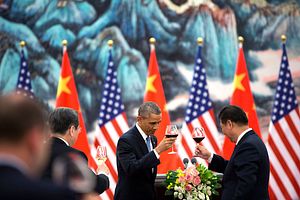In 1793, the Qianlong Emperor penned (or ordered composed) a now legendary letter to King George III, in which he attempted to frame relations between the Qing Dynasty and Great Britain into a traditional Chinese diplomatic framework. Over the centuries, the letter has been taken as evidence of the overbearing arrogance of the Chinese Imperial establishment in the face of the oncoming threat of the West.
More recent interpretations have suggested that the letter includes far more strategic thought than is commonly understood, but there is little question that it remains an artifact of a different era in global diplomacy. The norms of sovereignty and diplomatic equality were still developing in Europe (they continue to develop today), but the letter evoked a much different understanding of the relationship between sovereign leaders than was commonly understood as appropriate in the West.
The letter remains of interest, in part, because of the target; King George III was also, of course, one of the primary intended audiences of one of the most famous documents ever written, the 1776 Declaration of Independence. Like China, the United States struggled with the complexities of the international diplomatic system in the late 18th and early 19th centuries, taking some time to accommodate itself to standard diplomatic practice.
Even after the imperial period of Chinese diplomacy ended, China engaged the outside world only with some difficulty. The United States made a concerted effort to exclude the People’s Republic of China from the international diplomatic system for the first two decades of the PRC’s existence. For much of that period, the PRC collaborated with that process by adopting an adversarial and abjectly revolutionary approach to international diplomacy. Only in the 1970s and 1980s did the PRC begin to fully acclimate itself to global diplomatic norms.
And so, as we begin to pay attention to President Xi Jinping’s visit to the United States (a journey overshadowed, thus far, by the visit of a foreign cleric noted for medieval stylings), we should pause for a moment to consider how remarkably normal U.S. relations with China have become. China may well be pursuing a “new type of great power relations,” and that formulation may present substantial problems that the Obama administration has yet to grapple with, but Beijing and Washington have, at long last, been thoroughly socialized into the norms of a functioning, well-structured diplomatic system. China and the United States have become, the shared contempt of King George III notwithstanding, the two most important pillars of the global diplomatic system.

































